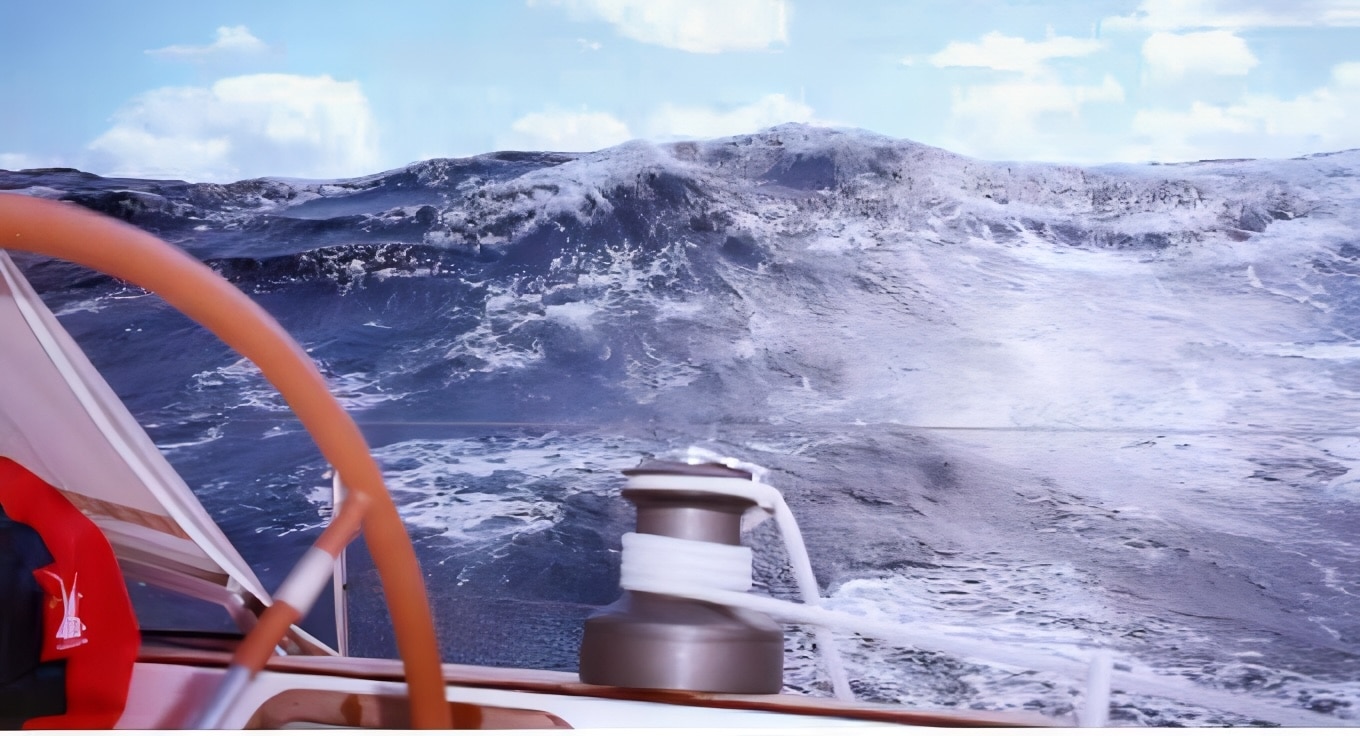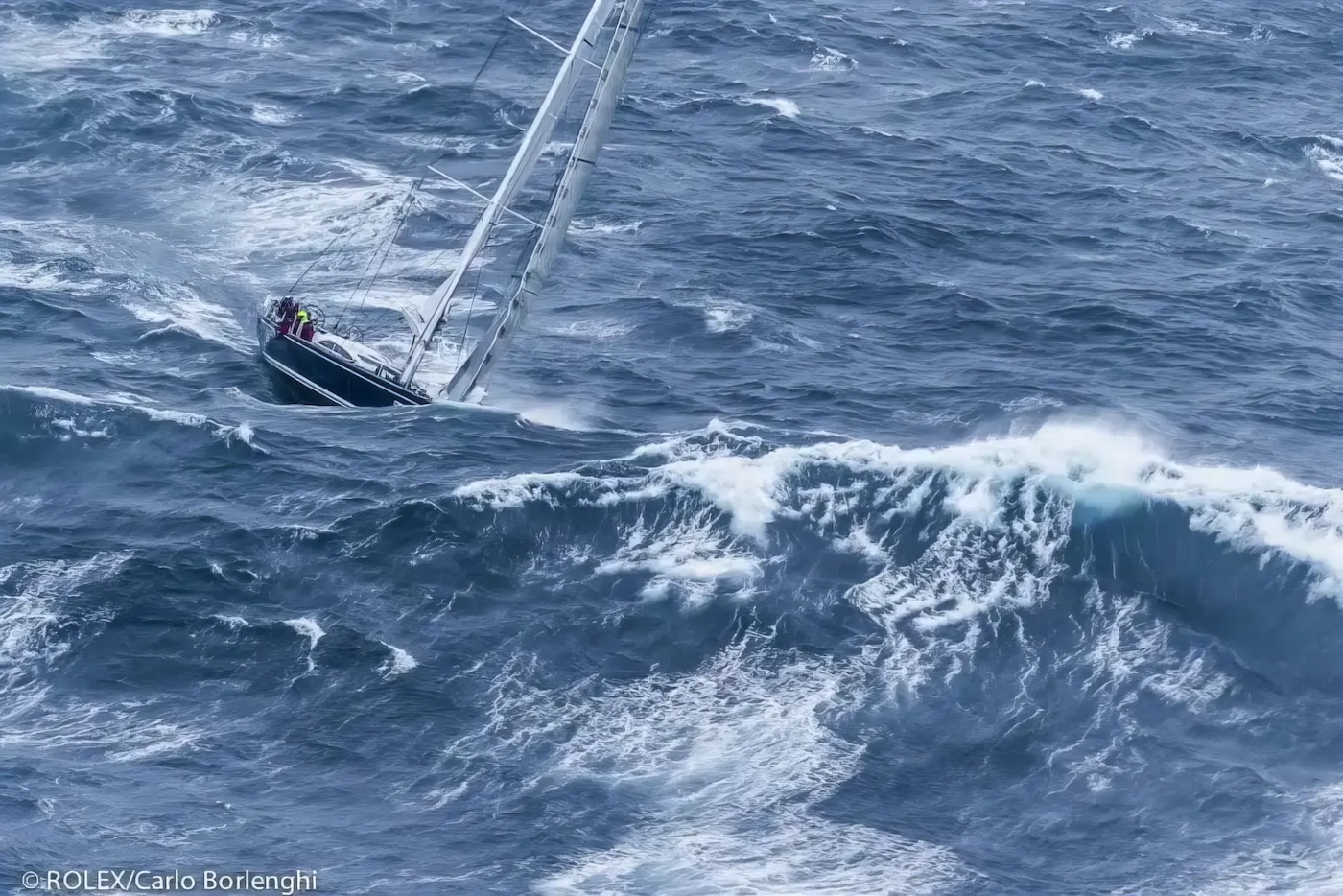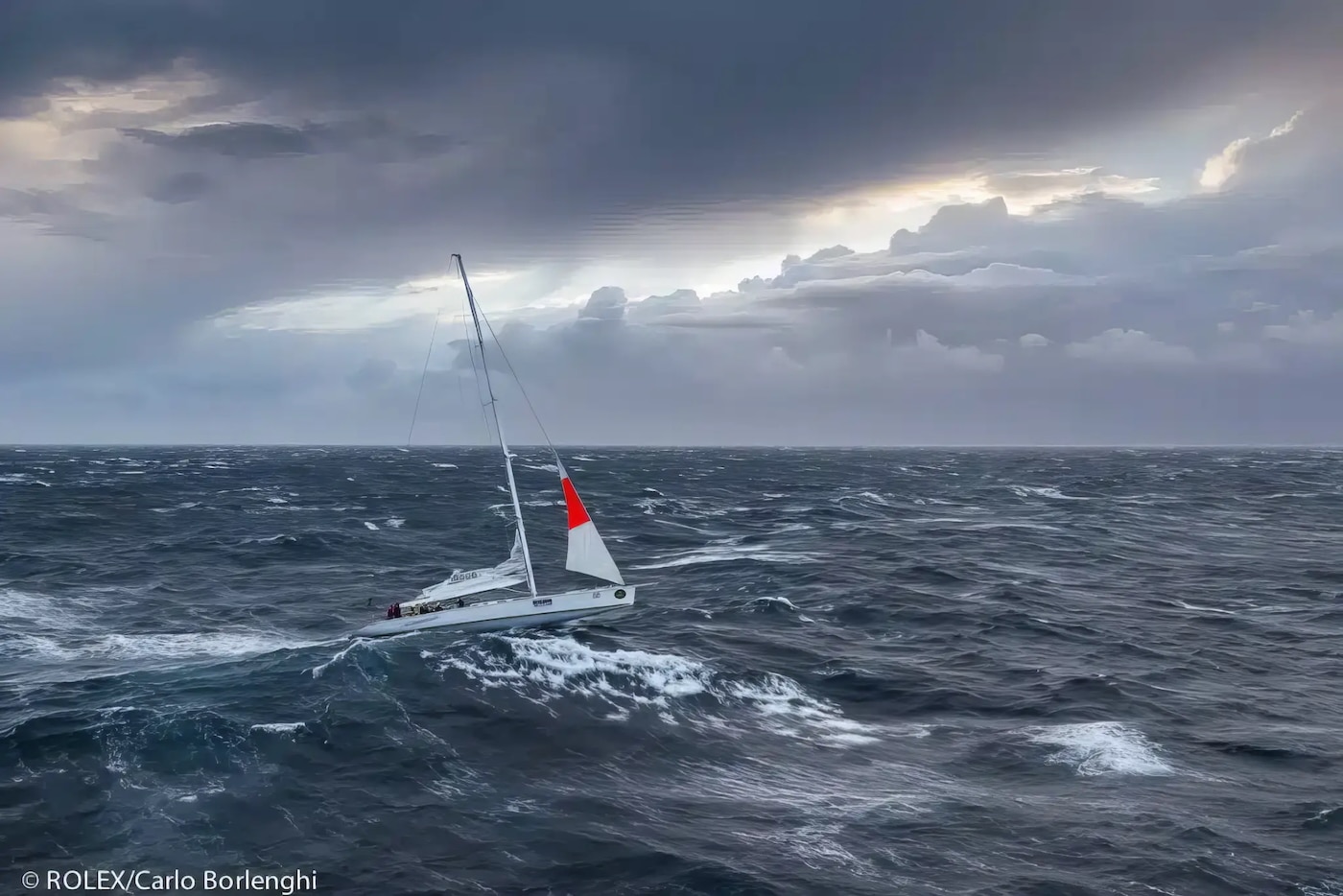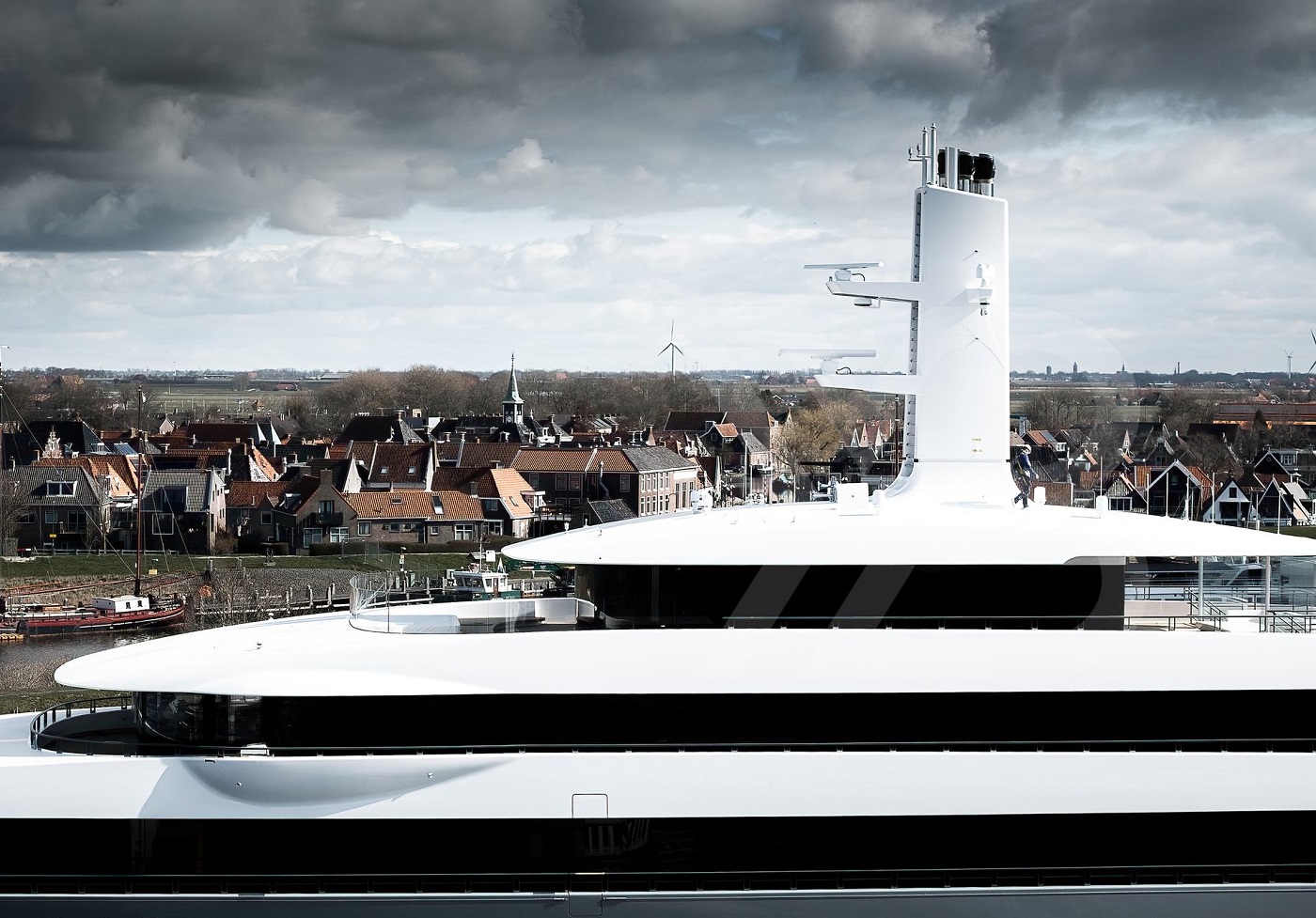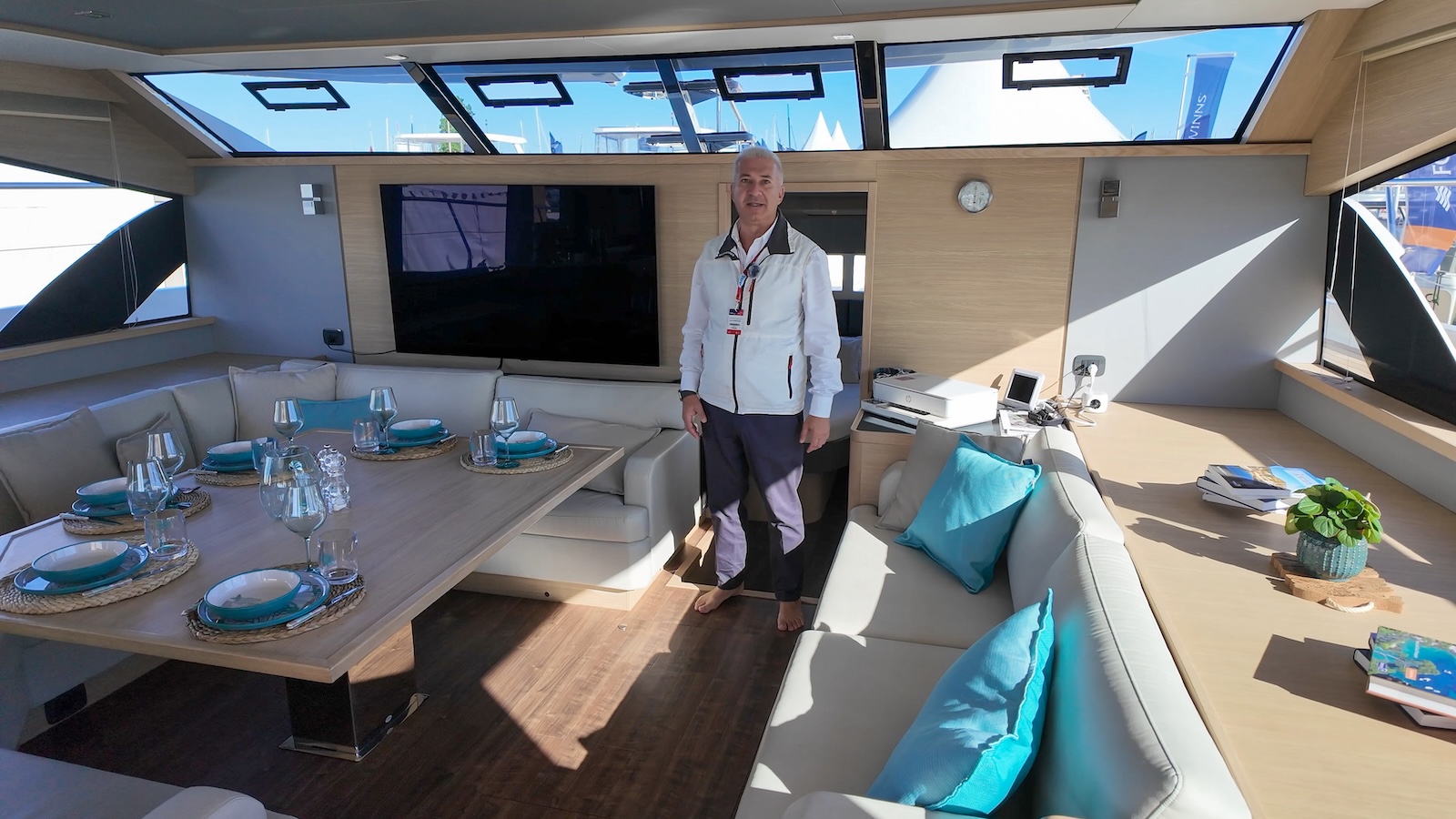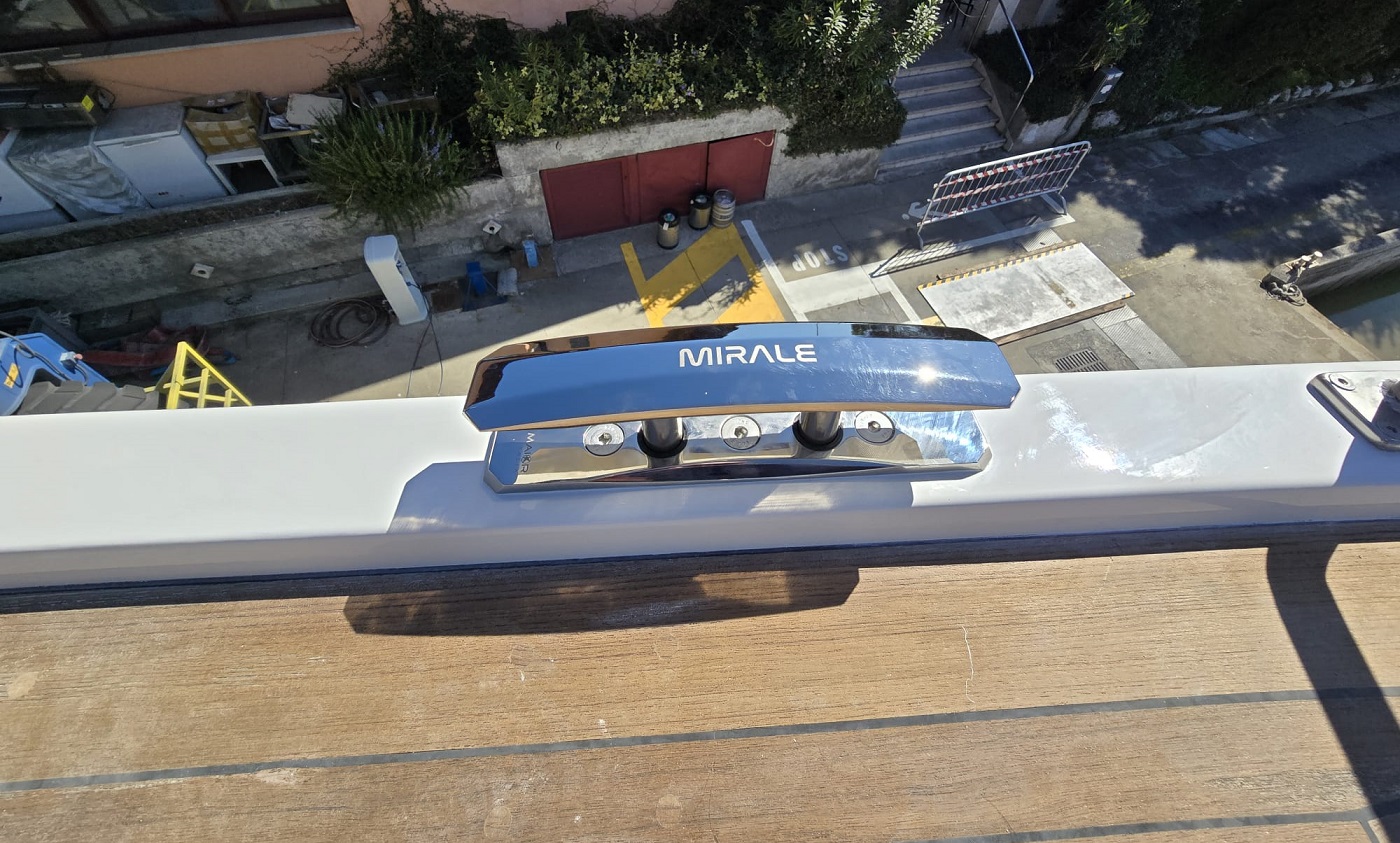At the helm in bad weather: focus, caution, and no panic.
Recent climate changes have increased the frequency of intense weather phenomena, often unexpected, which can challenge less experienced crews and create potential risks.
But what does “bad weather at sea” really mean? It’s not simply about a lack of sunshine, the presence of rain, or a rough sea making the journey uncomfortable. When we use this term, we’re generally referring to a combination of wind and sea conditions that make navigation challenging.
I use this definition intentionally because, while the technical term “gale” refers to wind speeds of 34 knots or more, the conditions in which a person begins to feel out of their depth are highly subjective. They vary depending on one’s perception of danger and level of experience.
At the helm in bad weather? Better not to be there
Let’s be clear: the best way to deal with bad weather is simply not to be there when it’s happening. Thanks to modern weather forecasting tools, it’s often possible to anticipate such conditions and steer toward areas where the phenomena will be less severe.
That said, no matter how reliable marine weather forecasts may be, they are still predictions—not guarantees. This means that when we review them and decide to move to avoid bad weather, we must avoid taking the information too literally, whether it’s about the precise location of the event or the exact timing of its occurrence.
In practice, to avoid bad weather, we should relocate well in advance and travel significantly farther than what the forecast map suggests. For instance, if the forecast indicates a storm in Zone X at 10 a.m. the next day, it’s advisable to move the afternoon before, covering a considerable distance—not just 5 or 10 miles, but 30, 40, or more—to reach a calmer area.
At the helm in bad weather, navigation
For those navigating and perhaps undertaking a crossing of 50, 100, or even 500 miles, where escaping an active weather system isn’t an option, the situation is entirely different. In such cases, it’s crucial to know how to handle bad weather while at the helm.
What should you do, for example, when faced with a gale?
Running with it—putting the wind and sea at your quarter—is often the best solution, provided it’s feasible and you have open water downwind.
However, if you must move away from a hazardous coastline with no shelter or safe havens, the alternative is to face the wind and waves, working to make headway against them.
Fleeing bad weather
Let’s examine the scenario where fleeing a gale is both necessary and possible. While this choice offers many advantages—reduced stress for both the boat and crew, less heeling, and the sea working in your favor rather than against you—it does come with one significant drawback: increased instability caused by wave motion.
Waves coming from the quarter exert pressure that pushes the boat toward the wind (weather helm). This tendency is more pronounced in boats with a narrow stern. If you’re at the helm of such a vessel, your task will be challenging, requiring all your experience and skill.
Traditional boats with classic lines, overhangs, and a closing stern are particularly difficult to recover once they start rounding up in heavy seas while on a downwind course. In such cases, staying ahead of the motion is key, along with the sensitivity to counteract pressure before it pushes the boat sideways to the wind and waves.
Modern boats with wider, flatter sterns are more forgiving. While the helmsman’s job remains the same, it’s less demanding, and it’s easier to bring the boat back on course when waves threaten to push it sideways.
Regardless of the design, the helmsman’s sensitivity is crucial. Anticipating weather helm means gently steering downwind as the wave approaches. As the boat begins to descend into the trough, the helm must then be brought back upwind, creating a constant interplay of steering adjustments that keep the boat safe, steady, and on course.
Speed
Another critical factor in handling bad weather is speed.
If the boat is moving too fast and the waves are steep and close together, there’s a risk of the bow plunging into the wave ahead. Conversely, if the boat is too slow, the water carried by the wave moves faster than the vessel. This reverses the flow over the rudder, rendering it ineffective, and creates serious difficulties in maintaining direction. Additionally, as the boat slows and drops into the trough, it exposes the cockpit to breaking waves, increasing the risk of flooding.
In these conditions, the key to safe handling is the skipper’s experience. Not only must they steer with anticipation and sensitivity to keep the boat riding the waves, but they must also make critical decisions about sail area. Reducing the mainsail or lowering it entirely while sailing under a smaller headsail can minimize weather helm and help maintain control, reducing the risk of broaching.
Beating into the wind
When at the helm in bad weather, beating into the wind isn’t just grueling—it’s sometimes entirely impossible. That’s why proper planning is crucial, even for short trips of just a few dozen miles, particularly during the winter months. A reliable weather forecast and a backup strategy are vital before setting out.
If beating into the wind becomes unavoidable, you must acknowledge that you’re facing some of the harshest conditions for both the boat and the crew. Prudence, conservatism, and a focus on balance are essential to ensure safe and efficient sailing.
Maintaining the correct sail configuration and trim is critical. Communication between the boat and its skipper becomes key—the boat will signal what it needs. If you notice that you must continually steer downwind to maintain your course, it’s a clear sign that adjustments are needed. This could mean easing the sails, reefing the mainsail, or even lowering it entirely. If the boat is excessively heeled and pitching too much, reducing the headsail area may also be necessary. This process of fine-tuning continues throughout the journey, as you strive for the perfect balance to suit the prevailing conditions.
Lowering the mainsail and sailing upwind with just the headsail is far from a sailing faux pas, especially when broad reaching.
This setup, tested repeatedly in conditions with short, moderate waves and strong wind, has proven effective in reducing strain on both equipment and the helmsman. However, there is a trade-off—a slight increase in leeway.
Before figuring out how to handle the waves, it’s essential to determine how close to the wind the boat can sail. The boat itself will indicate the limits, and there’s always the possibility of needing to bear off slightly more than the wind might initially allow. Once the course is set, focus shifts to managing the sailboat through the waves effectively. With formed seas and long waves, the technique is to head up into the wind as the boat climbs the wave and bear away gently as it descends the crest. This approach prevents the hull from falling into the trough or slowing down excessively.
Regardless of the chosen or required course, once the boat is trimmed and balanced, steering in bad weather becomes the most demanding task, requiring both physical stamina and mental focus. Concentration must be absolute to avoid mistakes that could compromise safety. If the helmsman is also the skipper, they must ensure the crew—whether actively involved in maneuvers or not—follows the basic safety rules. Life jackets must be worn, and harnesses secured and clipped to the lifelines.

